A workplace is an element of the production process indivisible in the organizational plan in specific conditions. It is served by one or several people, is designed to carry out various operations, is equipped with appropriate devices and equipment, depending on the specifics of the activity. In the Russian Federation, there are certain regulatory requirements for organizing jobs. Let's consider them in more detail.
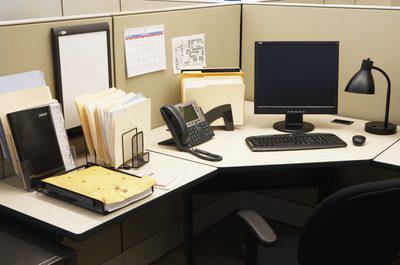
Legal aspect
The requirements for the organization of the workplace are established in:
- Labor Code of the Russian Federation.
- Legislative acts of subjects.
- International and state standards.
- Employment contract.
- Collective agreement.
These acts contain rules, procedures, establish criteria to ensure the preservation of the health and life of people in the course of their professional activities. Compliance with the requirements of the organization of workplaces is the responsibility of each employer.
Classification
Jobs are differentiated depending on the degree of automation. In accordance with this criterion, jobs are allocated:
- With a manual way to perform operations.
- Using a power tool with an external drive.
- Machine-made handmade. In this case, there is a machine / mechanism that operates with the direct participation of an employee.
- Machine places. On them, the main activity is carried out by the installation, the control of which and auxiliary operations are carried out by a person.
- Automated places. On them, key operations are carried out by machines, and auxiliary operations are fully or partially mechanized.
- Hardware places. They are equipped with special equipment on which production operations are performed by exposing the subject to electrical, physico-chemical or thermal energy.
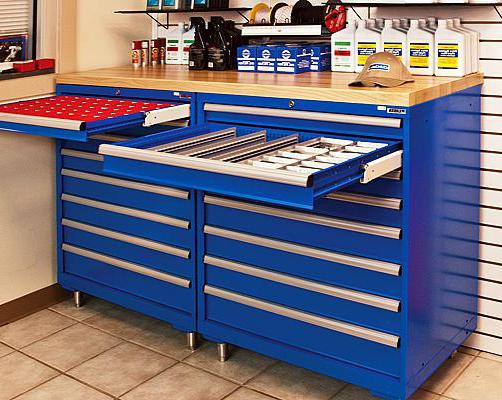
Workplace Organization: Occupational Safety Requirements
Areas for the implementation of professional activities are located outside the zone of movement of mechanisms, containers, goods, cargo movements. At the same time, convenient monitoring of ongoing processes and management of operations should be ensured. The basic requirements for the organization of workplaces include a regulation on the creation of free space between areas where employees carry out activities. It is necessary for the free movement of people during the operation of the equipment. Labor protection requirements to the organization of jobs include the mandatory placement of them in the process. At the same time, counter flows should be excluded when moving containers, products, and waste. The path of movement of products should be as short as possible, and transitions of employees are minimized. The general requirements for the organization of the workplace of a locksmith and other specialists employed at the machine, therefore, provide for the establishment of such a condition of the sections, as well as the distance between them, so that free movement of people and vehicles, normal maintenance, repair and cleaning of equipment are ensured.
The position of employees in the process of operations
The requirements for the organization of the workplace require the provision of sufficient space for the rational placement of additional inventory, containers, equipment. The area of professional activity should be convenient for a person.This also includes the employee's poses in which operations are performed. They should not create difficulties for a person. Requirements for the organization of the workplace include a provision on the possibility of performing operations in a sitting position or when alternating standing and sitting positions. This is provided if the activity does not require constant movement. When performing operations in a sitting position, people should be provided with comfortable chairs.
The requirements for the organization of the workplace where the employee carries out activities while standing include certain parameters of the site. In particular, the width should not be less than 600 mm, length - 1600 mm. The space for the feet has the following parameters: 530 mm wide, 150 mm each in height and depth. The table installed on the workplace should be at a height of 955 mm from the floor. Necessary tools, equipment, utensils are placed in drawers, wall cabinets, racks within reach. The key safety requirement for the organization of workplaces is to prevent cluttering of walkways and areas for the direct execution of production operations with containers and products. Their mutual arrangement and arrangement should provide free access and quick evacuation in case of emergency. 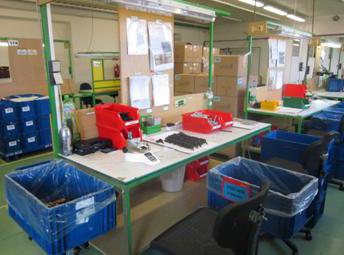
Activities of sellers
The following requirements for the organization of the workplace of an employee of a trading enterprise are provided:
- The placement of inventory and goods should provide convenience in the performance of actions. It is necessary to exclude unnecessary transitions, body and arm movements. Inventory and products must be in permanent places assigned to them.
- At the trading site, comfortable chairs or folding seats are installed for relaxing during the absence of buyers. Do not use boxes or other items for this purpose. There should be a wooden floor between the wall equipment and the counter. This is necessary to prevent hypothermia of the legs.
Sanitary requirements are established for plots of trading activities. When selling food products, there must be containers with special markings (containers with lids, buckets, etc.). As they are filled, but not more than 2/3, it must be cleaned. Upon completion of the work, all tanks and buckets, irrespective of their fullness, should be washed with a 1-2% soda solution or other detergents.
Packing, packaging, packing products
Workstations should use special chests and tables. The dimensions of the equipment must take into account anthropometric parameters. The working surface is located at the height established in GOST 12.2.032 and 12.2.033. The premises where flour and flour products are packaged are equipped with a local extractor fan. Packaging of products with high weight is carried out on tables of increased strength. On these surfaces should be provided containers for materials: paper, boxes, bags and so on. For stackers carrying out various operations, the following positions are recommended:
- for cutting gastronomic products - standing;
- for packing, weighing - sitting-standing.
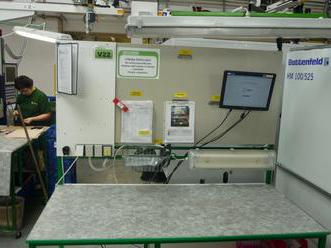
The workplaces of employees performing operations primarily in a seated position with limited mobility should be equipped with leg rests and comfortable seats that are adjustable in angle, height, distance from the table.
Space for cashier
At the employee’s workplace, a chair with a lifting and swivel mechanism is installed. The surface of the seat should be slightly curved and adjustable in height within the range of 0.4-0.45 m, have a width of 0.42 m and a depth of 0.41 m. The coatings are made of material that provides low thermal conductivity and the ability to carry out wet cleaning.For convenience, when working in a sitting position, the place is equipped with a footrest. It should have a regulating mechanism for the angle of inclination and the height of the supporting platform. One of the main requirements for ensuring optimal working conditions for cashier controllers is a high level of illumination. At the same time, sources of direct and reflected brilliance are excluded from the field of view of workers. Lamps are located directly above the employee's place of work.
Protection of cashier controllers from criminal attacks
It is provided by the equipment of the room with emergency lighting and the installation of the "panic button". In the process of transferring funds to a banking organization or during their transportation from it, the employer must provide the employee with security, and if necessary - a car. The cashier and the persons accompanying him, as well as the driver of the vehicle, are prohibited from:
- To disclose the path of movement and the amount of funds transported.
- Allow unauthorized persons into the vehicle interior.
- To transport funds by public or passing transport, as well as carry them on foot.
- Fulfill other orders, distracted from the delivery of cash to the destination.

Wet-heat treatment operations
Workplaces of ironers are placed in premises intended for the reception, maintenance and preparation of goods for sale. Special surfaces are equipped with a curly removable wooden board. On both sides she is covered with cloth. To the right, under a slight slope to the surface, a metal iron stand is installed on the table. On three sides, sides should be provided on it, the height of which is 30-40 mm. They are necessary to prevent the fall of the iron. In the right corner in the upper part of the surface is mounted a rack with a height of 800 mm. It is used to hang the iron cord. On the ironing table should also be a device for attaching a fan, a trough to prevent the products from hanging on the floor during processing. In addition, a retractable bracket for hanging an iron, a fan with a hinged mount, buttons for turning it on / off, a frame for a piece of cloth, with which the cleanliness of the sole of the iron is checked, is installed on the surface. The design of the desktop includes drawers for storing appliances, tools, a cabinet for storing personal belongings, a shelf for special pads, brushes, etc. A dielectric rug must be present on the floor. The workplace is also equipped with a chair with a lifting and swivel mechanism, a semi-soft seat for a short rest.
Storeroom
The area of the workplace should be at least 6 square meters. m. To ensure normal conditions for the professional activities of the storekeeper, insulated cabins are installed. The workplace can be fenced with a glazed partition, the height of which is 1.8 m. The storekeeper’s room is located closer to the areas where picking, packaging and shipping products for the expedition. The workplace is equipped with a table and a swivel chair. The storekeeper must have at his disposal the tools necessary for opening the container (pliers, scissors, pincers, knives, etc.). Above the employee’s table, where he draws up documentation, as well as near the file cabinets, lamps are installed. 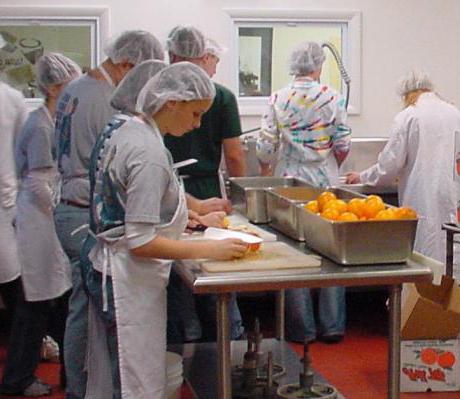
Space for the picker
The workplace is equipped with appropriate equipment, mechanisms and materials, depending on the categories of goods. When picking large items (refrigerators, furniture, etc.), the workplace occupies the entire storage area. In this case, operations are carried out using autocars or freight trolleys equipped with lifting devices. The activities of the picker, related to weighing, are carried out with the help of weights, the carrying capacity of which is 5-2000 kg.At the workplace should be installed stud. The height of his seat is 400-450 mm, the depth is 410-500 mm. In addition, local lighting is equipped at the workplace.
Room for the employee serving the freight elevator
The workplace is located on the site on the main loading floor. If the elevator's duties include escorting the cargo, then the area of his activity extends to the cabin where the objects are transported. At the workplace, a nightstand is installed to store documentation and a first-aid kit, a telephone or other means of communication, a stool, an internal or external button system for controlling sound and light alarms. In the engine room of the elevator must be a dielectric rug and gloves, as well as a protective helmet. The key to this room is transferred to the elevator.
Land for the cleaner
The workplace of this employee is located directly near the area that he serves. When planning the premises, it is necessary to provide driveways for cleaning machines and walkways for employees. The workplace is equipped with a cabinet with compartments in which detergents, protective clothing, and equipment are placed. 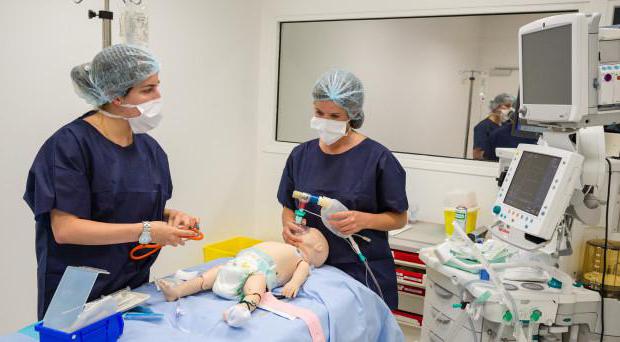
Equipping spaces for users of VDT and PC
For employees whose work involves the use of personal electronic computers and video display terminals, work desks are equipped, the height of which is adjustable within 680-800 mm. If there is no appropriate mechanism, the surface is placed at a distance of 725 mm from the floor. The height of the legroom is at least 600 mm, the width is at least 500, and the depth at the level of the knees is 450 mm and the elongated legs are 650 mm. The stand should be installed here. Its width is not less than 300, and the depth is 400 mm. The stand should be adjustable in angle up to 20 degrees. and height - up to 150 mm. On the front edge, a side is provided, the height of which is 10 mm. The stand should have a grooved surface. In the working cross (chair) of the PC and VDT user, a lifting and swivel mechanism is provided, adjustable in angle and height of the backrest and seat. Changing parameters should be easy. All mechanisms are performed independently and reliably fix the selected position of the elements. The surface of the backrest, seat and other parts with which the employee is in direct contact should be semi-soft, with a non-electrifying, non-slip, breathable coating, providing for easy cleaning from contamination. The monitor should be located from the employee’s eyes at a distance of 600-700 mm, taking into account the size of alphanumeric characters and signs.
Additionally
To prevent drafts in rooms located near doors, technological openings, gates, screens or partitions are installed. Preparation of the workplace is carried out at the end of the shift. The employee carries out cleaning of mechanisms, tools, auxiliary equipment, equipment. If necessary, wet cleaning is performed.
Conclusion
Until 2013, in accordance with the requirements of the law, regular certification of jobs was carried out. It included an assessment, verification of compliance with the requirements, the quality of the equipment of the plots for the implementation of professional activities of employees. Particular attention was paid to enterprises engaged in catering and food trade. Special commissions were created, which primarily checked whether the sanitary requirements for the premises were met. A new procedure has now been introduced. Assessment of workplaces replaced by an assessment of the conditions for employees to carry out professional activities. This procedure has been introduced since 2014. Corresponding amendments were made to the TC.






